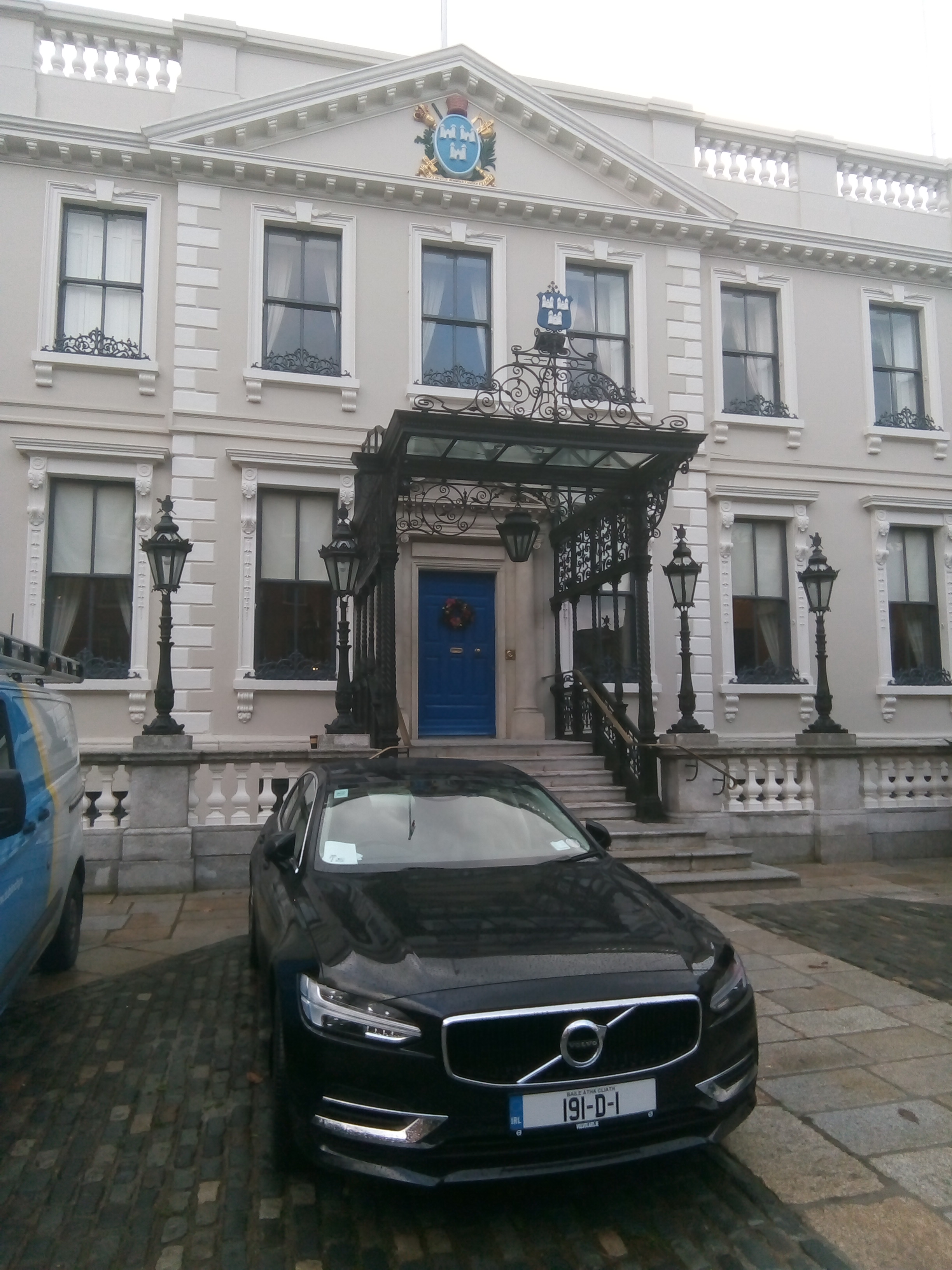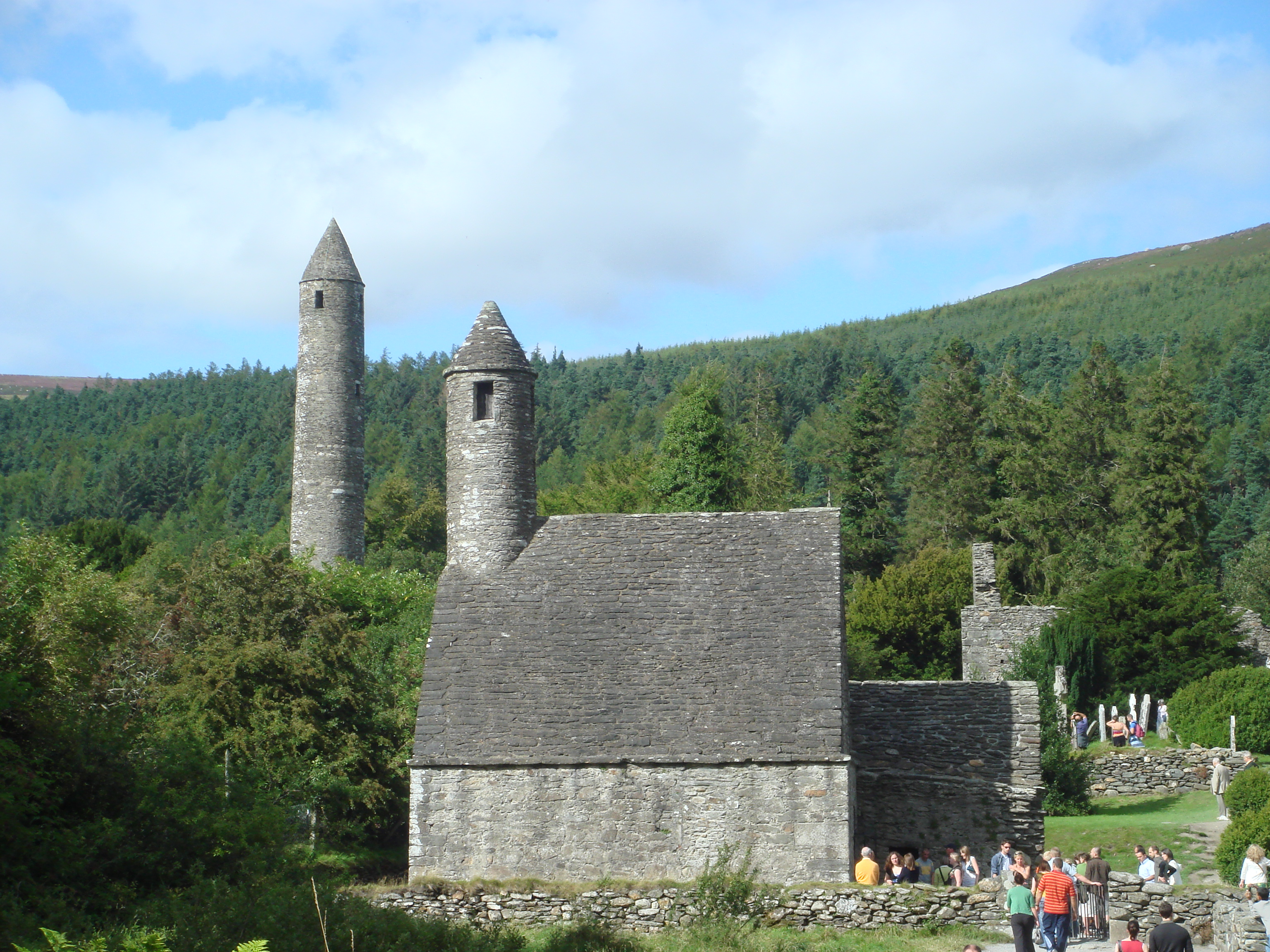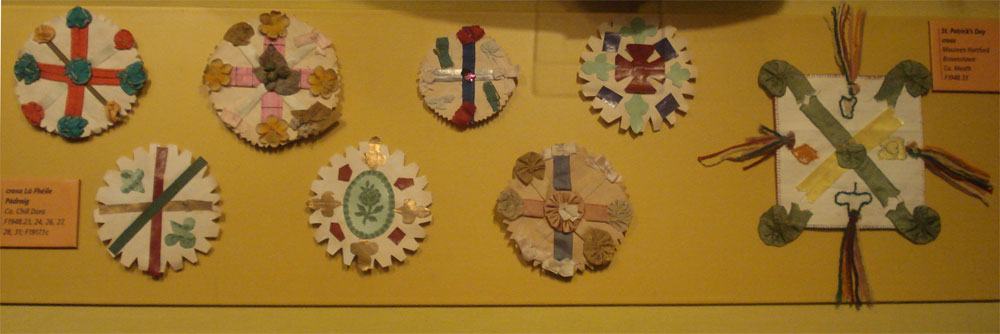|
Lord Mayor Of Dublin
The Lord Mayor of Dublin ( ga, Ardmhéara Bhaile Átha Cliath) is the honorary title of the chairperson ( ga, Cathaoirleach, links=no ) of Dublin City Council which is the local government body for the city of Dublin, the capital of Ireland. The incumbent, since June 2022, is councillor Caroline Conroy. The office holder is elected annually by the members of the Council. Background The office of Mayor of Dublin was created in June 1229 by Henry III. The office of ''Mayor'' was elevated to '' Lord Mayor'' in 1665 by Charles II, and as part of this process received the honorific The Right Honourable (''The Rt Hon.''). Lord mayors were ''ex-officio'' members of the Privy Council of Ireland, which also entitled them to be addressed as The Right Honourable. Though the Privy Council was ''de facto'' abolished in 1922, the Lord Mayor continued to be entitled to be addressed as The Right Honourable as a result of the Municipal Corporations (Ireland) Act 1840, which granted the title ... [...More Info...] [...Related Items...] OR: [Wikipedia] [Google] [Baidu] |
William III Of England
William III (William Henry; ; 4 November 16508 March 1702), also widely known as William of Orange, was the sovereign Prince of Orange from birth, Stadtholder of Holland, Zeeland, Utrecht, Guelders, and Overijssel in the Dutch Republic from the 1670s, and King of England, Ireland, and Scotland from 1689 until his death in 1702. As King of Scotland, he is known as William II. He is sometimes informally known as "King Billy" in Ireland and Scotland. His victory at the Battle of the Boyne in 1690 is commemorated by Unionists, who display orange colours in his honour. He ruled Britain alongside his wife and cousin, Queen Mary II, and popular histories usually refer to their reign as that of "William and Mary". William was the only child of William II, Prince of Orange, and Mary, Princess Royal, the daughter of King Charles I of England, Scotland, and Ireland. His father died a week before his birth, making William III the prince of Orange from birth. In 1677, he married h ... [...More Info...] [...Related Items...] OR: [Wikipedia] [Google] [Baidu] |
Roman Catholic Church
The Catholic Church, also known as the Roman Catholic Church, is the largest Christian church, with 1.3 billion baptized Catholics worldwide . It is among the world's oldest and largest international institutions, and has played a prominent role in the history and development of Western civilization. O'Collins, p. v (preface). The church consists of 24 ''sui iuris'' churches, including the Latin Church and 23 Eastern Catholic Churches, which comprise almost 3,500 dioceses and eparchies located around the world. The pope, who is the bishop of Rome, is the chief pastor of the church. The bishopric of Rome, known as the Holy See, is the central governing authority of the church. The administrative body of the Holy See, the Roman Curia, has its principal offices in Vatican City, a small enclave of the Italian city of Rome, of which the pope is head of state. The core beliefs of Catholicism are found in the Nicene Creed. The Catholic Church teaches that it is t ... [...More Info...] [...Related Items...] OR: [Wikipedia] [Google] [Baidu] |
Francis Taylor (martyr)
Francis Taylor ( Irish: Proinnsias Táiliúr; Beannaithe, Swords, c. 1550 – Dublin, 29 January 1621) was a Mayor of Dublin, Ireland, who was incarcerated because of his Catholicism. He has been declared a martyr for his faith and beatified by the Catholic Church. Life Born in Swords, County Dublin, Taylor moved to the City of Dublin and married the daughter of a prominent family, being the granddaughter of a Mayor of Dublin. He himself was elected Dublin's mayor in 1595. Taylor was imprisoned for his Catholic faith in 1613, and died there on 29 January 1621, after seven years of refusing to accept his freedom by giving up his religion. Veneration Pope John Paul II beatified Taylor on 27 September 1992, as part of a group of 17 Irish Catholic Martyrs who were victims of religious persecution due to their Catholic faith during that era. A statue of Taylor and of his wife's grandmother, the Blessed Margaret Ball, who had died in that same prison for her faith in 1584, st ... [...More Info...] [...Related Items...] OR: [Wikipedia] [Google] [Baidu] |
English Reformation
The English Reformation took place in 16th-century England when the Church of England broke away from the authority of the pope and the Catholic Church. These events were part of the wider European Protestant Reformation, a religious and political movement that affected the practice of Christianity in Western and Central Europe. Ideologically, the groundwork for the Reformation was laid by Renaissance humanists who believed that the Scriptures were the only source of Christian faith and criticized religious practices which they considered superstitious. By 1520, Martin Luther's new ideas were known and debated in England, but Protestants were a religious minority and heretics under the law. The English Reformation began as more of a political affair than a theological dispute. In 1527, Henry VIII requested an annulment of his marriage, but Pope Clement VII refused. In response, the Reformation Parliament (1532–1534) passed laws abolishing papal authority in England ... [...More Info...] [...Related Items...] OR: [Wikipedia] [Google] [Baidu] |
Walter Ball (alderman)
Walter Ball (died 1598) was from a wealthy Irish merchant family. His father Bartholomew Ball, his brother Nicholas Ball and sons Robert Ball and Edward Ball all served as Mayor of Dublin. He married Eleanor Ussher, daughter of Alderman Robert Ussher of Santry and his first wife Margaret St. John. He conformed to the established religion ( Anglican) to progress politically, and became Commissioner for Ecclesiastical Causes, imposing the Reformation on Dublin. This led to the conflict with his mother, Margaret Ball, whom he imprisoned for recusancy in Dublin Castle, where she endured conditions of appalling squalor for four years. Despite protests from other family members, especially his brother Nicholas, Walter defended his actions, arguing that he had shown clemency by sparing his mother's life, and that she could free herself by swearing the Oath of Supremacy (although it was almost impossible for a Roman Catholic to do this in good conscience). He remained implacable and duri ... [...More Info...] [...Related Items...] OR: [Wikipedia] [Google] [Baidu] |
Margaret Ball
Margaret Ball (1515–1584) was a prominent member of 16th-century Irish society, who, despite being the widow of a Lord Mayor of Dublin, was arrested for her adherence to the Catholic faith and died of deprivation in the dungeons of Dublin Castle. She was declared a martyr for the faith by the Catholic Church and beatified in 1992, one of a group of 17 Irish Catholic Martyrs. Early life She was born Margaret Bermingham in Corballis, a townland now part of the village of Skryne in County Meath, where her father, Nicholas, had purchased a farm when he emigrated from England. The family later became politically active; her brother, William Bermingham, protested in London against Earl Thomas Radclyffe, when he imposed the Protestant Reformation on behalf of the boy-king Edward VI. When she was 16 years old, Margaret Bermingham married Bartholomew Ball, an alderman of the City of Dublin, whose wealthy family operated the bridge over the River Dodder, which is still known as Balls ... [...More Info...] [...Related Items...] OR: [Wikipedia] [Google] [Baidu] |
Bartholomew Ball
Bartholomew Ball (died 1573) was Mayor of Dublin in 1553–54. He was the son of Thomas Ball and Margaret Birmingham. The Ball family owned lands in Dublin at Ballygall near Glasnevin and operated the bridge over the River Dodder after which Ballsbridge, Dublin, is named. A merchant, Bartholomew Ball served as high sheriff of Dublin City for 1541–42 before becoming mayor for 1553–54. He married Margaret Bermingham in 1530 (now the Blessed Margaret Ball) and lived in Ballygall, County Dublin. They had ten children, of whom only five survived. Their sons Walter Ball and Nicholas Ball both served as Mayor of Dublin. On becoming mayor, Walter arrested his aged mother for her Roman Catholic sympathies and incarcerated her in Dublin Castle Dublin Castle ( ga, Caisleán Bhaile Átha Cliath) is a former Motte-and-bailey castle and current Irish government complex and conference centre. It was chosen for its position at the highest point of central Dublin. Until 1922 it ... [...More Info...] [...Related Items...] OR: [Wikipedia] [Google] [Baidu] |
County Wicklow
County Wicklow ( ; ga, Contae Chill Mhantáin ) is a county in Ireland. The last of the traditional 32 counties, having been formed as late as 1606, it is part of the Eastern and Midland Region and the province of Leinster. It is bordered by the Irish Sea to the east and the counties of Wexford to the south, Carlow to the southwest, Kildare to the west, and South Dublin and Dún Laoghaire–Rathdown to the north. Wicklow is named after its county town of Wicklow, which derives from the name ( Old Norse for "Vikings' Meadow"). Wicklow County Council is the local authority for the county, which had a population of 155,258 at the 2022 census. Colloquially known as the "Garden of Ireland" for its scenerywhich includes extensive woodlands, nature trails, beaches, and ancient ruins while allowing for a multitude of walking, hiking, and climbing optionsit is the 17th largest of Ireland's 32 counties by area and the 15th largest by population. It is also the fourth largest ... [...More Info...] [...Related Items...] OR: [Wikipedia] [Google] [Baidu] |
John Drake (mayor)
John Drake (died c. 1433) was one of the most celebrated medieval Mayors of Dublin. He was acclaimed by his fellow Dubliners as a hero for his decisive victory over the O'Byrne clan of County Wicklow at the Battle of Bloody Bank in July 1402.O'Byrne ''Irish Independent'' 18/4/2012 Background He was a member of the prominent Drake family of Drakerath, County Meath, who were a junior branch of the wealthy English landowning Drake family of Ash, Devon. Sir Francis Drake is sometimes said to have belonged to another branch of the same family, although this has been disputed. John was a close relative, possibly a son, of Richard Drake of Drakerath, who was High Sheriff of Meath in 1385, and he may have been the John Drake who held the same office in 1422 (although some sources say that he had retired into private life by then). Matilda (or Maud) Drake, who married the eminent judge Sir Christopher Bernevall, was also a close relative, possibly a sister, of John. He married Isabella, w ... [...More Info...] [...Related Items...] OR: [Wikipedia] [Google] [Baidu] |
Gilbert De Lyvet
Gilbert de Lyvet (died ca. 1244) was an early Anglo-Norman nobleman and merchant who became one of the earliest Mayors of Dublin. He donated extensive properties to the Cathedral of the Holy Trinity in Dublin, acted as witness for early gifts to the cathedral, and was a partisan for the Bigods, the de Clares, the de Lacys and other Norman magnates. Biography Early life The birthplace of Gilbert de Lyvet is unknown, although he was likely born in Sussex, England, where the Levett family had their seat from about the time of the Norman Conquest. The family later became Lords of the Manor of Firle, Sussex, and received extensive grants of land across the south of England. They were sublords of the de Ferrers family, originating from the village of Livet in Normandy within the original de Ferrers barony. Mayor Gilbert de Lyvet was a citizen of Dublin from 1229-1244. He served as Mayor of Dublin for four one-year terms, 1233–1234, 1235–1236, and was re-elected for a third te ... [...More Info...] [...Related Items...] OR: [Wikipedia] [Google] [Baidu] |
Saint Patrick's Day
Saint Patrick's Day, or the Feast of Saint Patrick ( ga, Lá Fhéile Pádraig, lit=the Day of the Festival of Patrick), is a cultural and religious celebration held on 17 March, the traditional death date of Saint Patrick (), the foremost patron saint of Ireland. Saint Patrick's Day was made an official Christian feast day in the early 17th century and is observed by the Catholic Church, the Anglican Communion (especially the Church of Ireland), the Eastern Orthodox Church, and the Lutheran Church. The day commemorates Saint Patrick and the arrival of Christianity in Ireland, and celebrates the heritage and culture of the Irish in general. Celebrations generally involve public parades and festivals, céilithe, and the wearing of green attire or shamrocks. Christians who belong to liturgical denominations also attend church services and historically the Lenten restrictions on eating and drinking alcohol were lifted for the day, which has encouraged and propagated the holiday ... [...More Info...] [...Related Items...] OR: [Wikipedia] [Google] [Baidu] |


.jpg)



